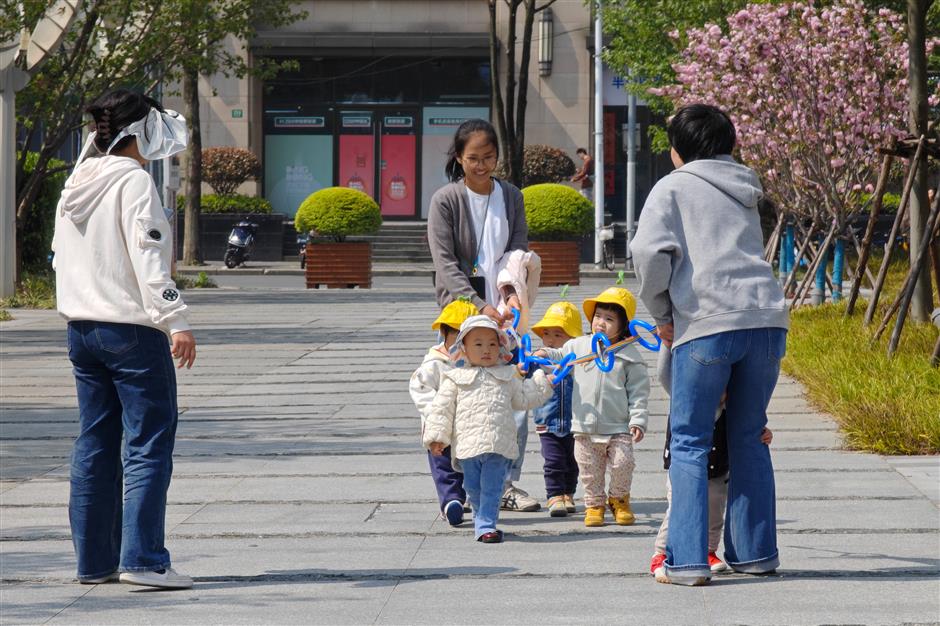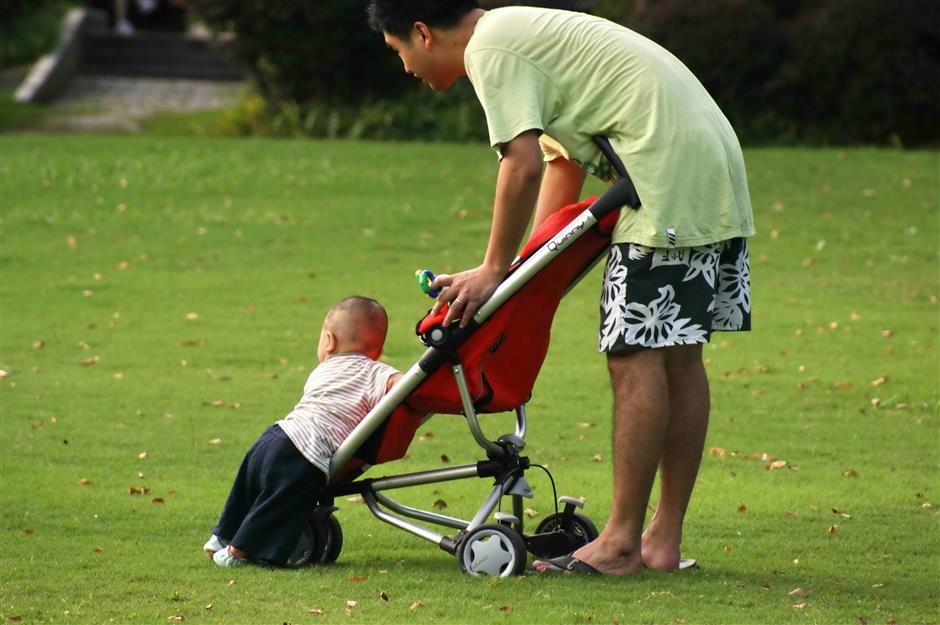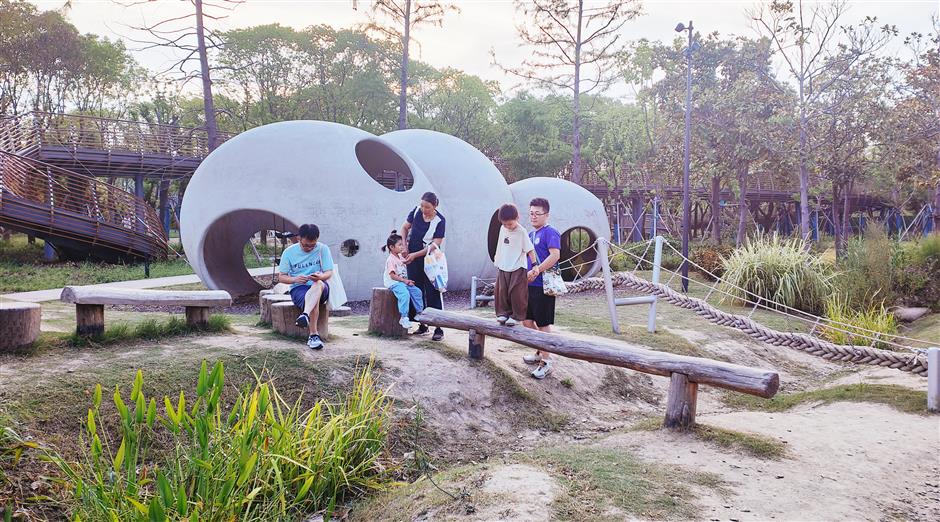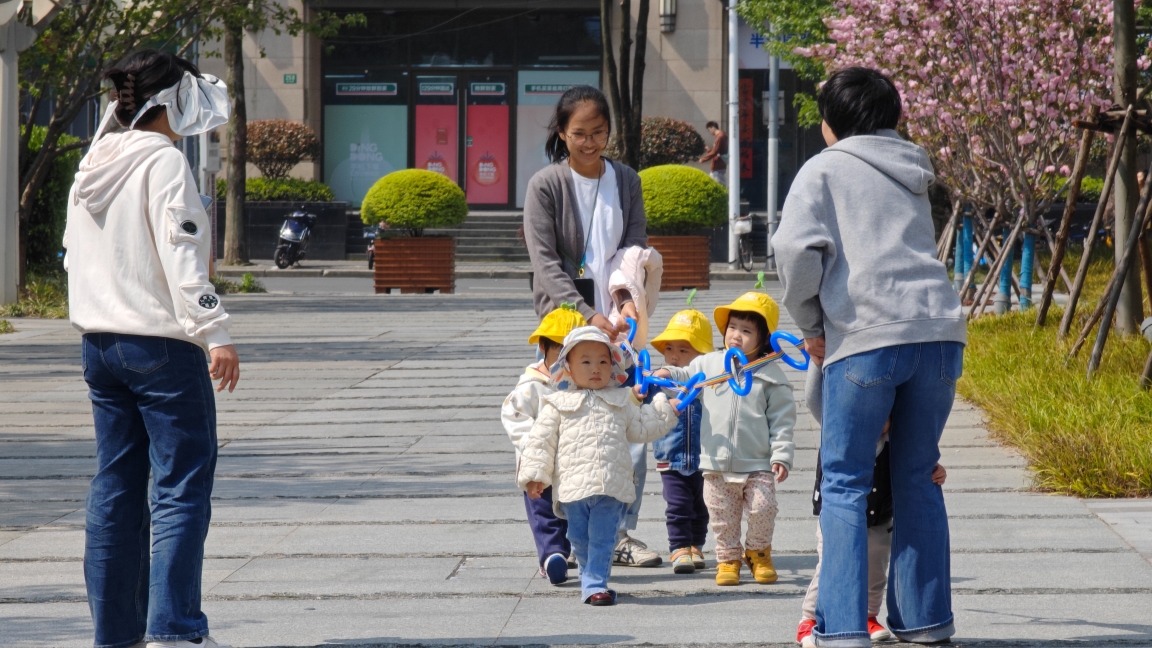

Staff from a local childcare center walk with several young children at the former World Expo 2010 site in Shanghai's downtown Huangpu District.
Shanghai's latest data shows a notable rise in birth rates in 2024. Local women are giving birth at an average age of 32.58, and most still choose to have only one child.
Birth rates in the Yangtze River Delta increased last year, according to the latest regional data. The rise comes amid growing efforts by local governments to ease the financial and caregiving pressures of childrearing.
Shanghai's birth rate climbed from 4 per thousand in 2023 to 4.8 last year, marking the region's sharpest gain.
Jiangsu Province's rate rose slightly from 4.8 to 5, while for Zhejiang Province it increased from 5.8 to 6.2. Anhui Province saw a small decline, from 6.5 to 6.2, but still tied for the region's highest rate with Zhejiang.
The gains reflect a broader trend across China. The country recorded 520,000 more births in 2024 than the previous year, the first national year-on-year increase in eight years.
Despite the rise, one-child families remain common. In Shanghai, over half of the local women (52.6 percent) have only one child. About 16.6 percent have two, and just 2.55 percent have three or more.
In Zhejiang, 33.2 percent of women have two children, while 5.4 percent have three or more.
Anhui shows the strongest trend toward larger families, with 38.3 percent of women having two children and 10.1 percent having three or more.
The average age of childbirth continues to rise. In Shanghai, women now give birth at an average age of 32.58, and first-time mothers are on average 31.81 years old. In Zhejiang, the average childbearing age has risen from 27.98 in 2010 to 29.09 in 2020.

A father carries his infant while walking in a city park green space in Shanghai.
Local governments have expanded childcare services to address one of the main concerns among younger families – lack of caregivers.
By the end of 2024, Shanghai had around 1,500 childcare centers providing 66,000 daycare slots. Hangzhou in Zhejiang offered 59,000 slots across 1,565 centers. Suzhou (Jiangsu) and Hefei (Anhui) provided 58,000 and 51,000 slots, respectively.
To keep services affordable, 65 percent of daycare slots in Jiangsu are now classified as "affordable care." In Changzhou, for instance, 75 percent of centers charge under 2,000 yuan (US$279) per month.
Zhejiang has set a target to keep average childcare fees under 30 percent of local household income by the end of 2025.
Shanghai has also piloted a free short-term daycare program known as "Baby House." Between 2023 and 2024, the city added more than 15,000 slots to the program. Today, over 90 percent of neighborhoods offer the service, with full coverage in central urban districts.
These regional efforts coincide with China's implementation of a national childcare subsidy policy. Announced in 2024, the policy standardizes subsidies at 3 to 4 percent of per capita GDP, aiming to reduce the cost of raising children.
On Tuesday, the State Council, the nation's cabinet, announced a waiver of childcare and education fees for children attending public kindergartens in the year before the fall semester of 2025.

Parents and children play at the newly-unveiled West Bund Nature and Art Park in Shanghai's Xuhui District.

